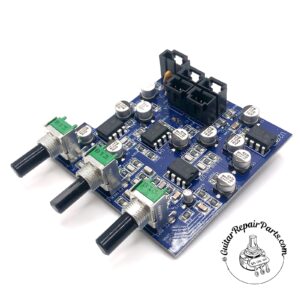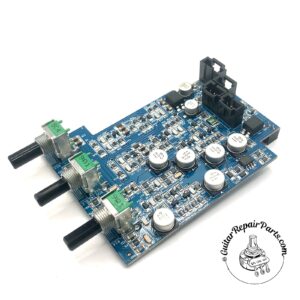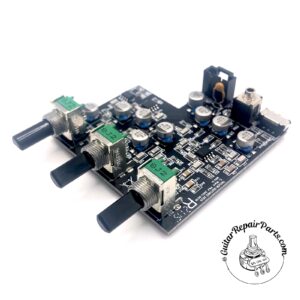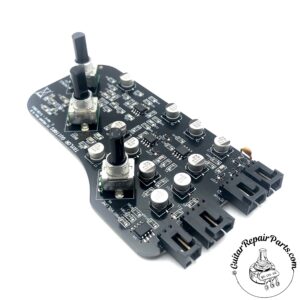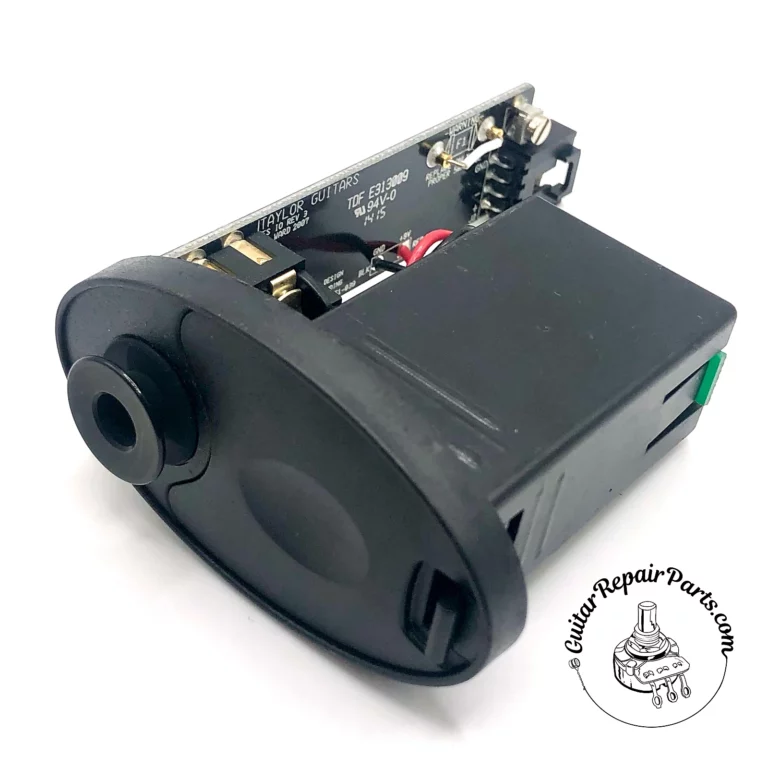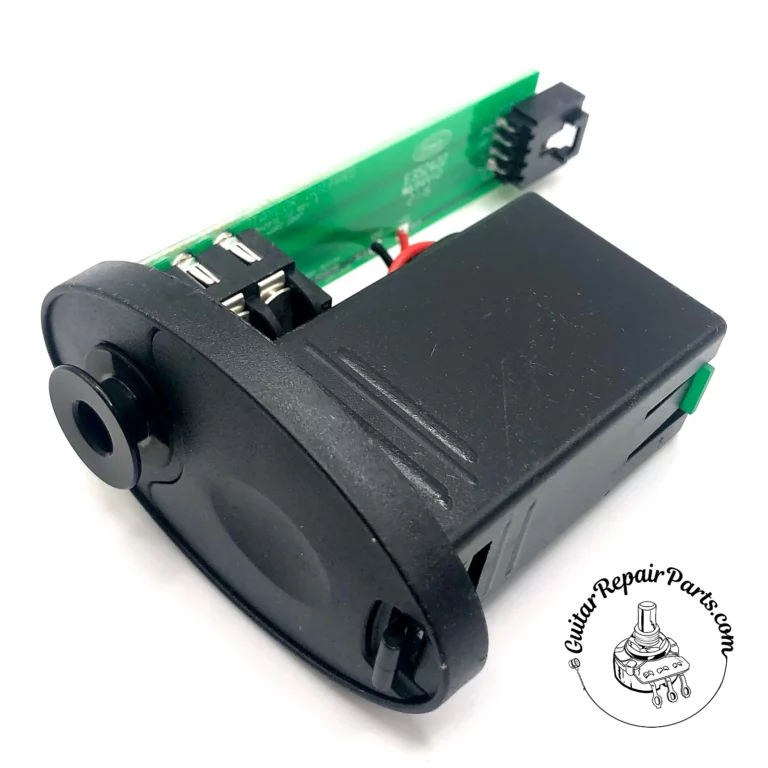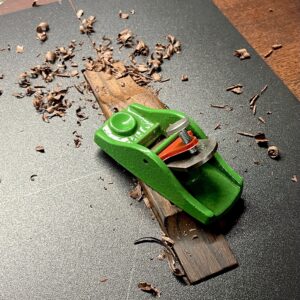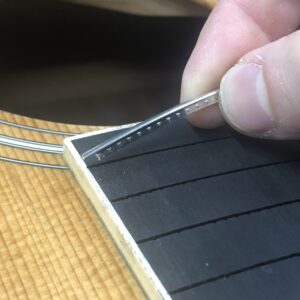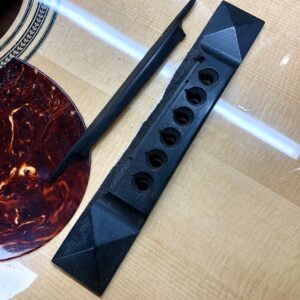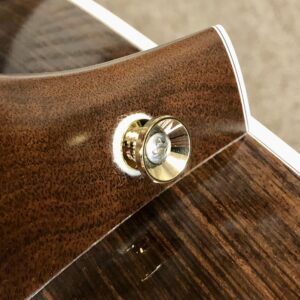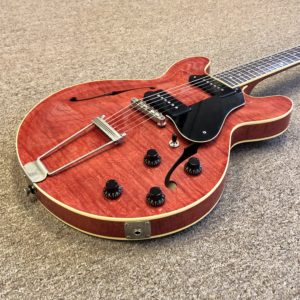Taylor Guitars Expression System Repairs
The Taylor Guitars Expression System is a series of proprietary onboard acoustic guitar electronics. Here we will discuss some commonly needed repairs. The previous link will be helpful in determining which version your instrument is equipped with.
Scratchy Volume / Tone Controls
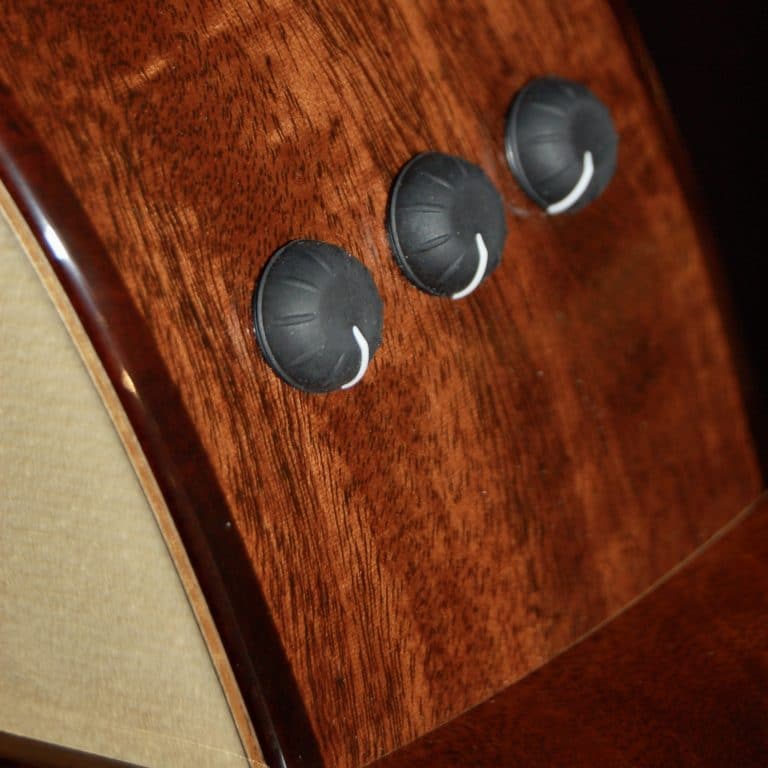
The expression system uses sealed potentiometers to minimize the chance of dirt or dust interfering with their operation. However, sometimes these controls oxidize or wear out, becoming scratchy when turned, and potentially experience signal drop out when placed in certain positions.
Oftentimes, unmounting the preamp, to facilitate a thorough cleaning of the control pots, will restore the unit to functionality. If that fails to solve the issue, or the problem recurs, replacement may be required.
Replacement Expression System Preamps
Expression System Power Supply Issues
The combination power supply, battery box, output jack, and strap button that is located at the base of the guitar is a high stress piece that will require maintenance or replacement from time to time.
ES1.1 AA Battery Box Corroded Batteries
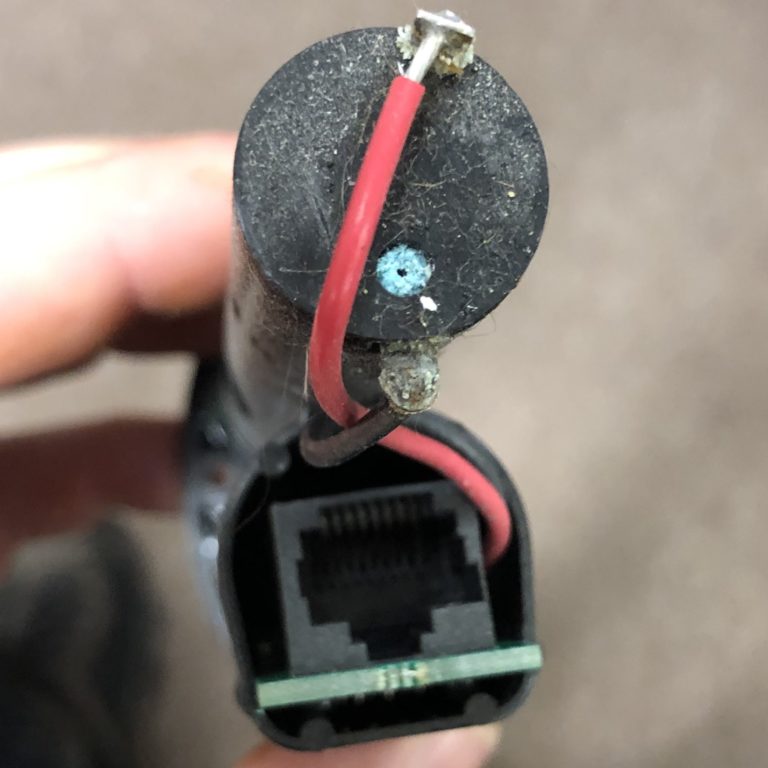
A common issue with the first generation Expression System ES1.1 is the need to remove stuck, corroded, batteries from the battery box. With a bit of elbow grease and a thorough cleaning, these boxes can usually be salvaged. To avoid this issue, whenever the electronics will not be used regularly, we recommend storing the instrument without the batteries installed.
The ES1.1 system is considered obsolete and replacement components are no longer available. If your original ES1.1 system is beyond repair, click here to learn about the upgrade options available.
The ES1.2 and ES1.3 String Ground
The ES1.1, ES1.2, and ES1.3 are fairly unique among acoustic guitar electronics in that they feature magnetic pickups as transducers. This helps give the system its distinctive voice. While magnetic pickups are ubiquitous on electric guitar designs, piezo pickup technology is more commonly employed on other brands of pickups, as well as Taylor’s EST and the current ES2 pickup system.
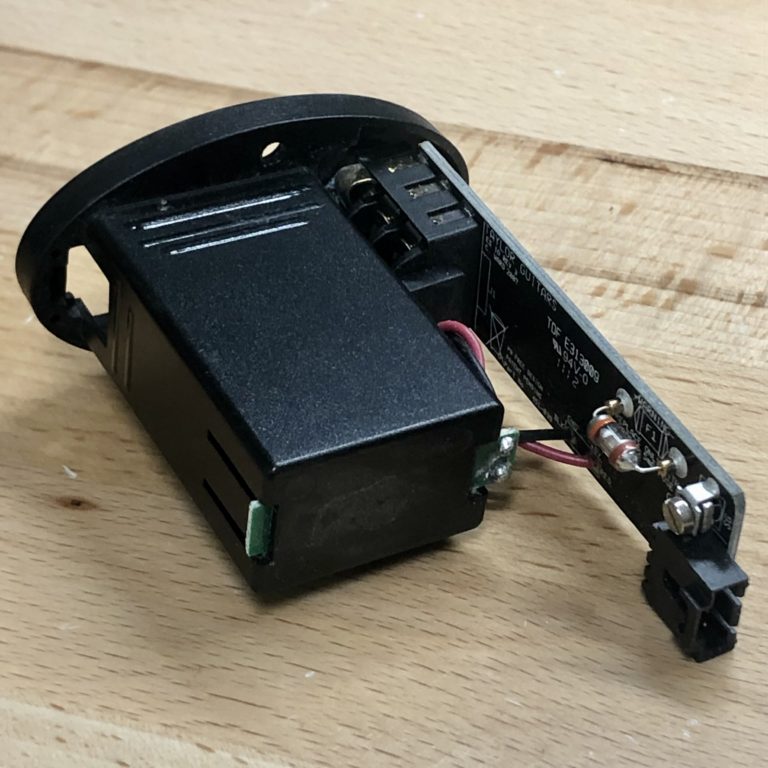
Taylor Guitars incorporated a string ground wire into the ES1.2 and ES1.3 to eliminate noise that might result from electro-magnetic interference. Rather than just running a wire, as is typically done on electric guitars, they cleverly added a fuse to the circuit; The fuse functions to protect the player should any errant voltage find its way into the line via a poorly grounded amplifier or P.A. system.
Even a very small voltage, 5mA, will cause the fuse to blow; This severs the string ground connection, thereby removing the players hands from the circuit, eliminating the potential shock hazard. However, once the fuse has blown, it must be replaced to restore proper functionality of the string ground wire. Without a function string ground connection, the guitar may hum more than previously. If touching the instrument’s output jack lessens the hum, odds are good that the fuse is blown and needs to be replaced.
Replacing A Blown Ground Fuse On Taylor's Expression System
With the strings still on the instrument, a multimeter is used to test whether or not there is continuity between the instrument’s strings and the grounded portion of the instrument cable. Having failed that test, we next look inside the guitar to make sure that the ground wire is still physically attached between the bridge plate and the power supply. If all checks out, the fuse has likely blown.
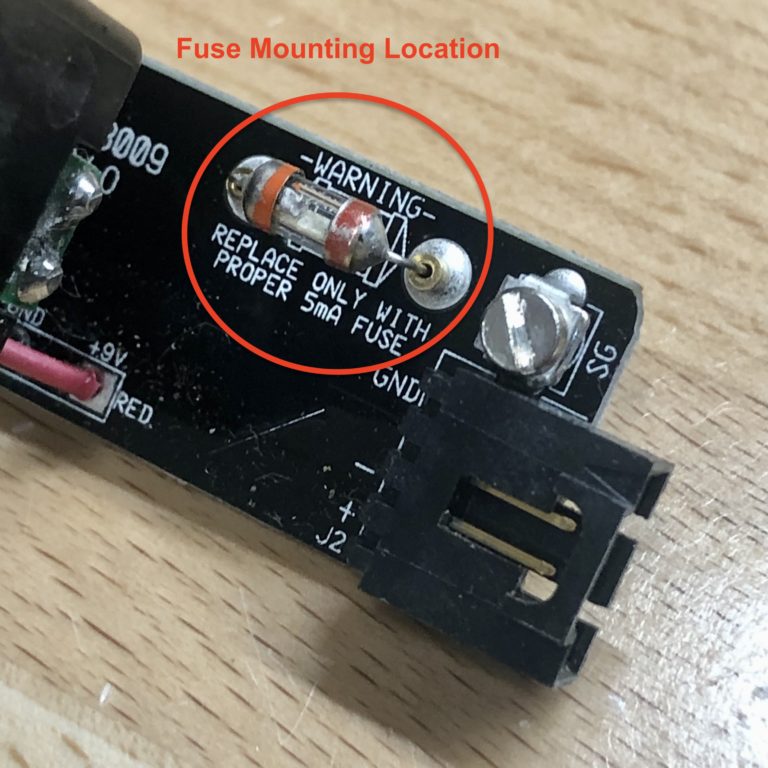
We remove the battery box / power supply assembly from the instrument, allowing access to the PCB mounted string ground fuse attachment ports.
The fuse is press fit into two standoffs mounted on the board; It should simply pull straight out. After removing the fuse from the unit, we test to confirm that it has blown.
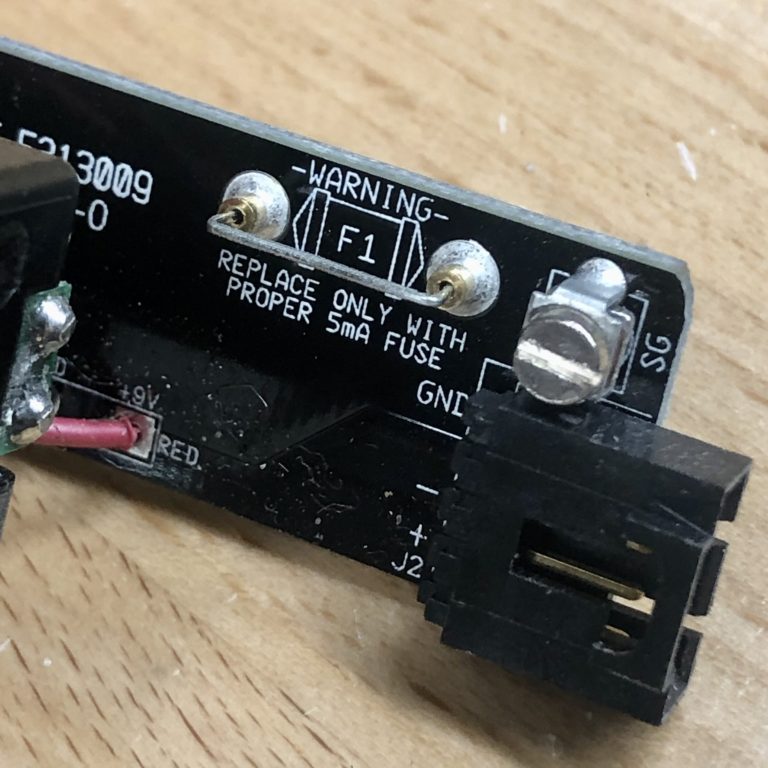
As of the time of writing, Taylor no longer offers replacement fuses for these legacy systems.
To restore string ground functionality, a jumper wire must be installed in the fuse holder slot. (A standard staple from a desk stapler happens to be a perfect fit) While jumping the connection does eliminate the added protection from shock that was offered by the fuse, they player is not in grave danger; The unit will now simply function exactly the way that it does on countless electric guitars employing a similar string ground wire design.
Replacement Expression System Power Supplies

Erik Salomon - Calico Guitarworks Owner / Head Technician
Tech Talk articles are part of an ongoing effort to provide clear and detailed answers to common questions about guitar maintenance, modifications, and repairs.
While not intended as a step-by-step guide to servicing your own instrument, we hope that you will find value in the information provided.

Great Repairs Start With The Right Parts
Many of the parts mentioned in our blogs are available for purchase at:
GuitarRepairParts.com
Enter the code "TechTalk10" at checkout for 10% off your first order.
About Calico Guitarworks
Calico Guitarworks is the area’s premier destination for fretted musical instrument care and maintenance. Owned and managed by Erik Salomon, the shop is dedicated to providing quick, honest and reliable service. The staff at Calico Guitarworks has a combined 25+ years of professional guitar repair experience. Sharing the knowledge that we accumulate in this focused pursuit is at the core of what we do. Learn more About Calico Guitarworks, explore our Frequently Asked Questions, or Contact us with a specific request.

